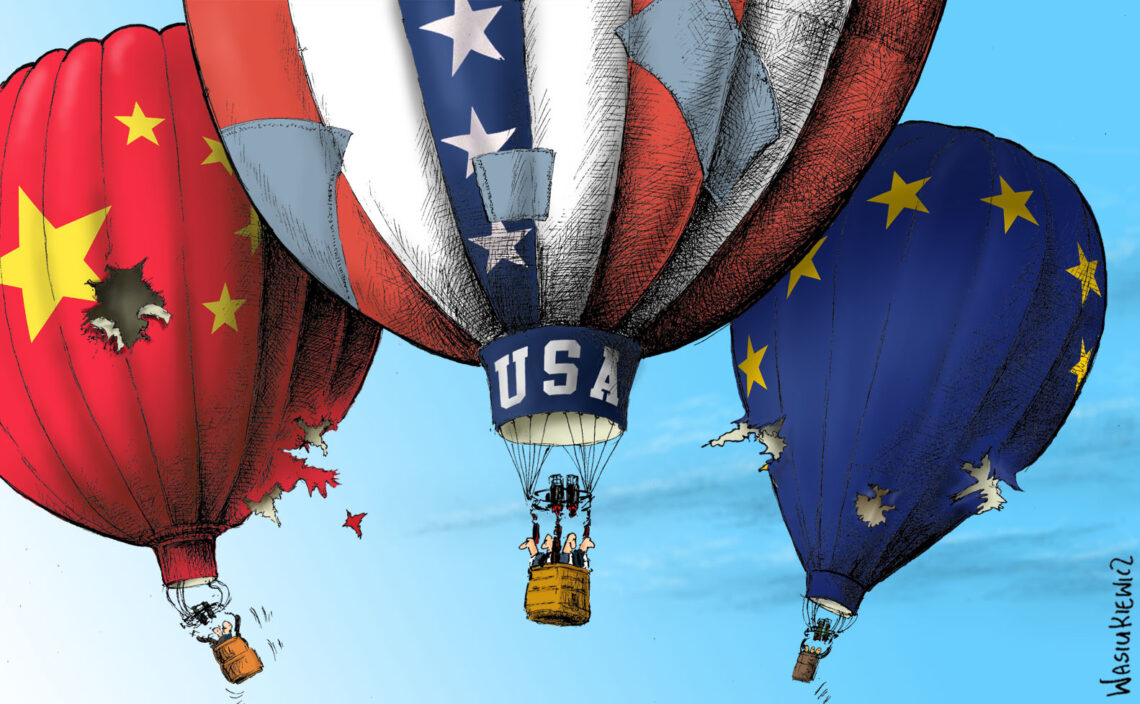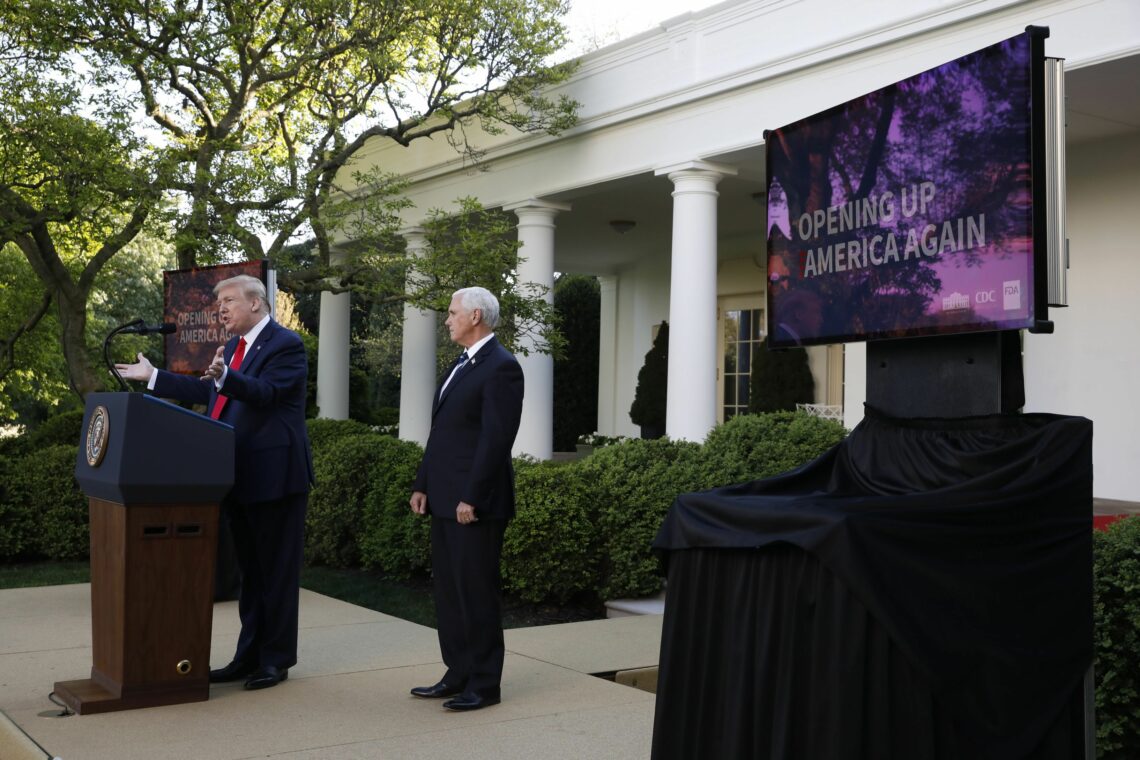Vectors for U.S. leadership
Covid may alter U.S. foreign policy less than many think – even if a new president wins in November. If the economy gets back on track, the U.S. will likely take an active global role, both in containing weakened rivals and strengthening allies hamstrung by the pandemic.

In a nutshell
- Economics will help determine U.S. global engagement
- Washington’s rivals will struggle with the effects of the virus
- The U.S. will focus on strengthening partnerships
This report is part of a GIS series on the consequences of the COVID-19 coronavirus crisis. It looks beyond the short-term impact of the pandemic, instead examining the strategic geopolitical and economic effects that will inevitably be felt further in the future.
The great power competition appears on hold as nations grapple with the spread of the coronavirus and the economic, societal and political consequences of responding to the outbreak. While it is difficult to predict the United States’ condition after it reduces the spread of infections and seeks to restart its economy, it is possible to map out the variables that will shape its engagement. In the long term, expect more continuity than change in American policy.
The U.S. will eventually recover from the COVID-19 pandemic. The country is mostly following efficacious mitigation measures enacted elsewhere. Those measures, Washington predicts, will help it achieve several goals: bringing the spread of the virus under control within the next 30 to 60 days, preventing hospitals from being overwhelmed, and developing an arsenal of medical tools – from robust testing to therapeutics – to manage the disease and mitigate the threat of a second wave of infection.
One can track three factors to evaluate the validity of this prediction: the geographic location and number of persons affected, along with mortality rates; stockpiles and distribution of critical medical supplies; and the development and delivery of therapeutics and prophylaxis.
Economic activity
As the crisis subsides, one key variable will be U.S. efforts to spur economic recovery. In the near term, the unemployment rate could reach 15 percent or higher, while gross domestic product could fall by double digits. Furthermore, the U.S. is assuming unprecedented national debt. It has never faced an economic downturn of this character and there is no consensus on how to direct national recovery or how quickly the U.S. will rebound.
The most important initiative the federal government can take is supporting measures to jump-start economic activity.
The federal government’s role is far from certain. Legislative initiatives are many and varied. Among other proposals, they include barring federal agencies from commissioning medical supplies from China and funding national infrastructure. With Congress often out of session in the weeks and months ahead, there are limited prospects for an active legislative agenda.
The most important initiative the federal government can take in the near term is recommending and supporting measures to jump-start economic activity. Those decisions will kick in gradually over the next several weeks.
Hamstrung rivals
Another assumption of U.S. policy is that other actors in the great power competition will be restrained and risk-averse as they grapple with their own responses to the disease. We have seen some disruptive activity, including a spate of aggressive propaganda from China, Iranian surrogates attacking American forces in Iraq, and North Korea launching short-range ballistic missiles. These, however, appear modest compared to recent tensions between the great powers.

Moreover, the U.S. will likely find that its adversaries have done themselves no favors in their reactions to the global pandemic. China’s actions, for example, may have so frustrated the British government that London will move to completely bar Chinese telecom company Huawei from participation in its 5G telecom infrastructure. Iran seems as estranged as ever – its calls for sanctions relief while it battles the pandemic have fallen flat.
The U.S. will, therefore, expect to take a proactive position in driving global engagement once the outbreak begins to subside.
Strengthening partnerships
That said, the outbreak has already made some of the U.S.’s challenges more difficult. One is its partnership with Europe. While Washington does not think the European Union will collapse, it does expect parts of Europe to come out far better than others. Divisions within the bloc will deepen, and both Russia and China will try to draw weakened partners into their orbit. The U.S. will likely have to take part in a European recovery to sustain the transatlantic community.
The U.S. will be looking to strengthen its partnerships in Asia, to advance its ‘free and open Indo-Pacific’ concept.
The U.S. will be looking to strengthen its partnerships in Asia, so it can continue to advance its “free and open Indo-Pacific” concept. To coordinate the COVID-19 response, a group of countries being dubbed the “Quad Plus” has emerged. It adds countries like South Korea and New Zealand to the four Quad countries of the U.S., India, Japan and Australia. The development could lead to further cooperation in managing relationships with China.
Increased disruption
The U.S. will also pay more attention to the Greater Middle East, where the impact of the outbreak in Iran could spill over into the rest of the region, exacerbating tensions.
Another area where the U.S. will train more of its focus is Africa. Washington worries that a disruption caused by COVID-19 and increasing Chinese influence could spill over and destabilize both Europe and the Middle East.
The U.S. will pay greater attention to international organizations, too. Washington is frustrated by increasing Chinese influence in these institutions. They will increasingly be a new battleground in the great power competition.
Bipartisan consensus
The results of the U.S. election may surprise many, in that it will prove less of a pivot point than they expected. By November, the U.S. economy’s trajectory and the impact of American policies will be more established. Despite the increasingly heated partisan rhetoric in the U.S., there is far more bipartisan consensus than is commonly acknowledged. Even a change in government could bring far fewer shifts in the U.S approach to great power competition than one might assume, looking only at the bitter public partisan rhetoric.
Once Americans get the pandemic under control, the most likely scenario is more continuity than change in the U.S. approach to global competition. What could well reshape the U.S. response is the state of its instruments of national power. That could hinge on how quickly the U.S. economy rebounds – and that is one of the biggest unknowns.







